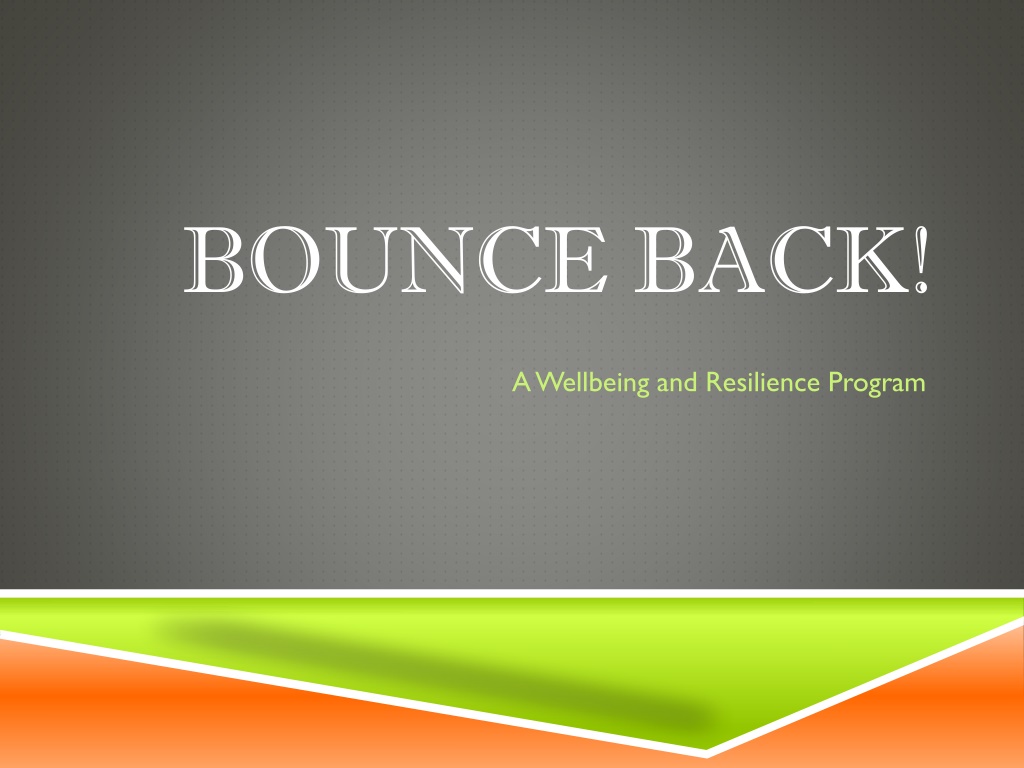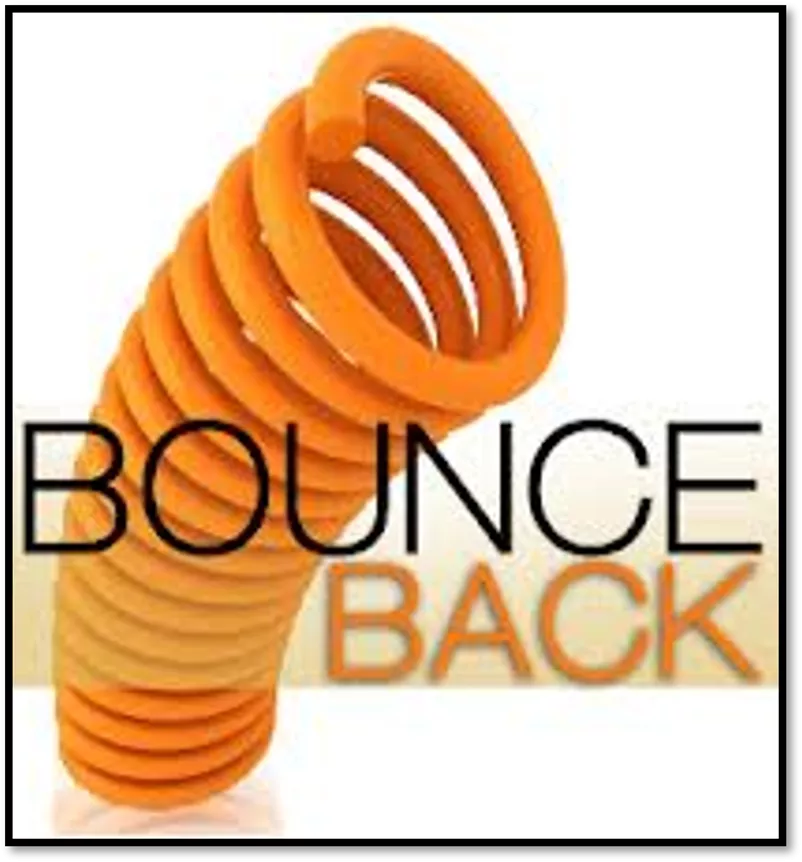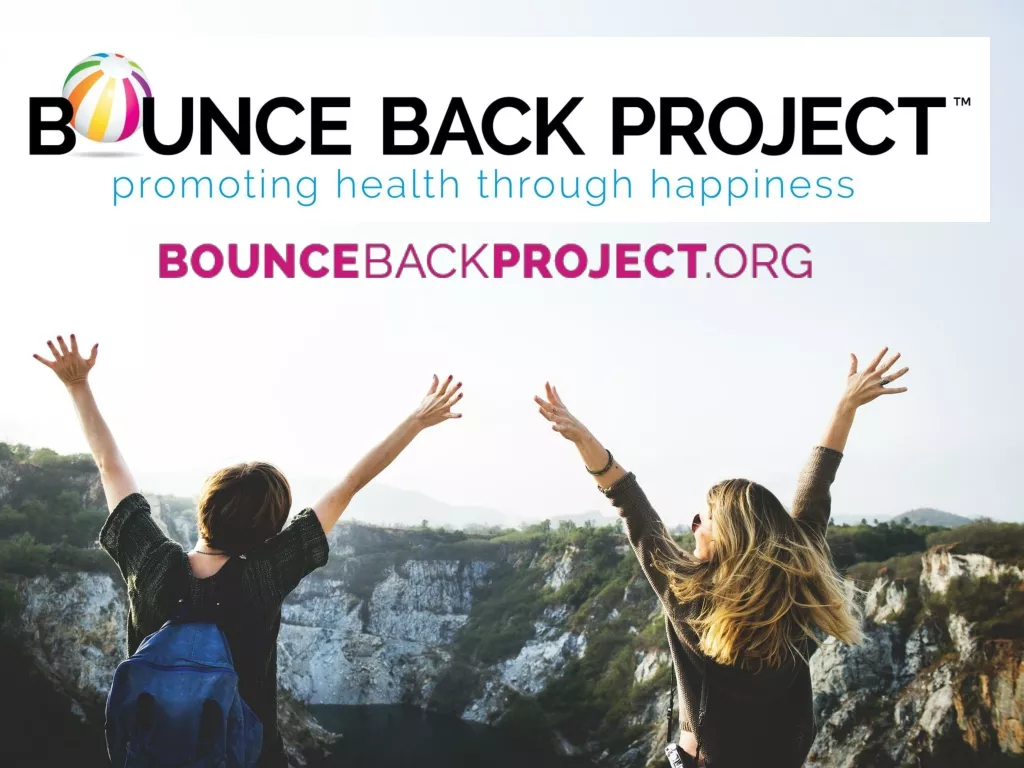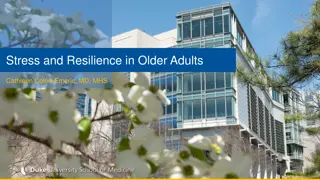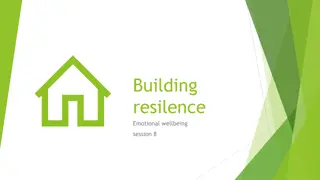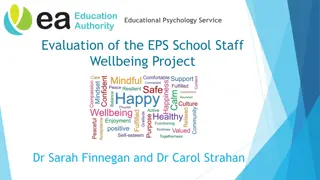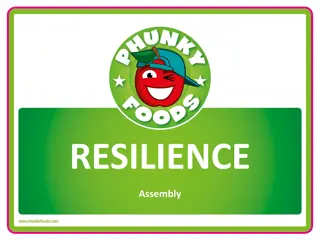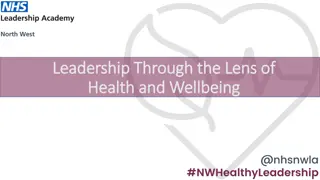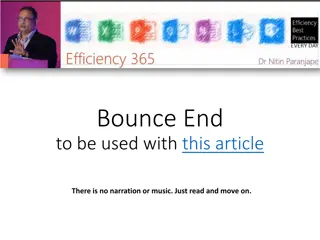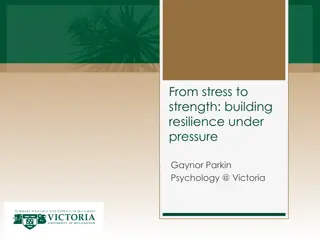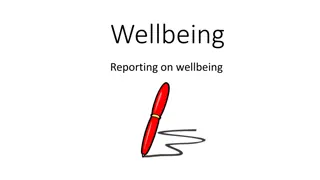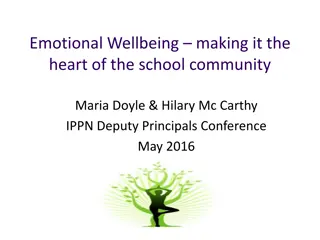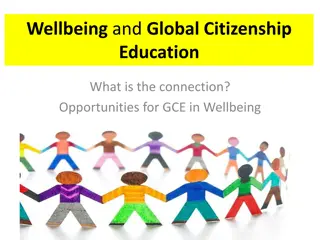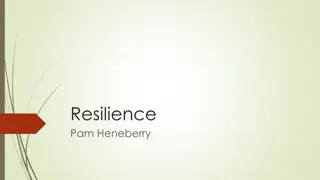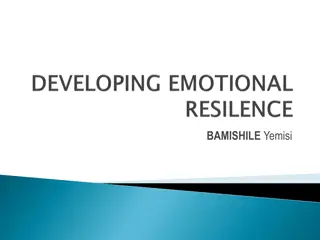Bounce Back! Wellbeing and Resilience Program Overview
Bounce Back! is a comprehensive whole-school program designed to enhance students' social and emotional learning skills, promoting positive mental health and resilience. It integrates various classroom activities, cognitive behavior theory, and children's literature to teach key concepts. The program focuses on universal implementation, emphasizing core values such as honesty, fairness, and responsibility, across 9 units of work.
Download Presentation

Please find below an Image/Link to download the presentation.
The content on the website is provided AS IS for your information and personal use only. It may not be sold, licensed, or shared on other websites without obtaining consent from the author.If you encounter any issues during the download, it is possible that the publisher has removed the file from their server.
You are allowed to download the files provided on this website for personal or commercial use, subject to the condition that they are used lawfully. All files are the property of their respective owners.
The content on the website is provided AS IS for your information and personal use only. It may not be sold, licensed, or shared on other websites without obtaining consent from the author.
E N D
Presentation Transcript
BOUNCE BACK! A Wellbeing and Resilience Program
What is the Bounce Back! Program? Bounce Back! Is a whole-school social and emotional learning program. It has been developed to support schools and teachers in their efforts to promote positive mental health and wellbeing in their students and, in particular, enable them to act resiliently when faced with challenges and adversity.
Bounce Back integrates the teaching of important social and emotional skills within all the KLAs. It is built on a combination of research, cognitive behaviour theory and the use of children s literature to teach the key well-being and resilience concepts. Each unit contains a large variety of engaging classroom activities that include co-operative strategies such as circle time, educational games, music, art, drama and contemporary culture and technology. Many of the activities also feature critical and creative higher order thinking.
LIFE THROWSTHINGS AT US.. An F for a test Illnesses Accidents Falling out with others Setbacks Challenges
Often we observe people who seem to be able to bounce back from adversity And others that don t These days, it looks as if it is becoming harder for young people to bounce back after setbacks.
The core features of Bounce Back! Bounce Back! is a long term, multi-year, whole- school program. It is universal in that it is taught to all students, not just selected students. Bounce Back! is taught by the class teacher due to the nature of relationships formed. It uses a multi-strategic approach, focussing on different aspects of social and emotional learning, and on both the promotion of positive behaviour and the reduction of anti-social behaviour. Wherever possible, the knowledge, skills and concepts are integrated with academic content.
There are 9 units of work: Core values honesty, fairness, responsibility, co- operation, acceptance, respect and inclusiveness. People bouncing back the Bounce Back acronym, focussing on the positive, normalising instead of personalising. Courage understanding that if there is no fear there is no courage, understanding that fear is relative, developing skills and perceptions that lead to being more courageous Looking on the bright side accepting that bad times are temporary, being thankful for good things that happen.
Emotions - amplifying positive emotions, understanding that how you THINK about something is how you FEEL about it recognising and managing negative emotions. Relationships developing skills for making and keeping friends, getting along with others and managing disagreements. Humour - understanding that humour can assist in coping with hard times and differentiating between humour that helps and humour that harms. No bullying making bullying uncool, discriminating between bullying behaviour and other anti-social behaviour, developing skills and attitudes which assist students to respond adaptively to being bullied or put down , developing skills for managing negative peer pressure and developing skills for discouraging bullying and offering bystander support. Success K-2 Star , 3 & 4 Champ , 5-8 Winners . - learning that success is largely a result of effort.
Bad times dont last. Things always get better. Stay optimistic. Other people can help if you talk to them. Get a reality check. Unhelpful thinking makes you feel more upset. Think again. Nobody is perfect not you and not others. Concentrate on the positives (no matter how small) and use laughter. Everybody experiences sadness, hurt, failure, rejection and setbacks sometimes, not just you. They are a normal part of life. Don t personalise them. Blame fairly. How much of what happened was due to you, to others and to bad luck or circumstances? Accept what can t be changed (but try to change what you can change first). Catastrophising exaggerates your worries. Don t believe the worst possible picture. Keep things in perspective. It s only part of your life.
IMPLEMENTATION Some units/ideas/concepts will be covered as cross- curriculum units. There are numerous books and videos mentioned within the program that will be incorporated as a literacy unit of work with resilience as a focus. The program also addresses many of the outcomes in our PD/H/PE syllabus. As with Focus on Reading our aim is for the whole school to be exposed to the same concepts/language and similar strategies. The No Bullying unit will be our initial focus.
BOUNCE BACK K-2 LOOKING ON THE BRIGHT SIDE OF THINGS 2015 unit focus
KEY POINTS It s good to be positive and look for the good things Look for the small good bits in the bad things that happen Bad times don t last. Things get better Don t give up, stay hopeful One unhappy thing in your life doesn t mean everything else is spoiled too.
TEACHING/LEARNING ACTIVITIES Songs: http://www.youtube.com/watch?v=A3yCcXgbKrE When you re smiling Sunnyside up Zip-a-dee-doo-dah Picture books : Alexander and the Terrible, Horrible, No Good, Very Bad Day Sam s Sunday Dad What a wonderful world for listening to the words, visualising, Circle time - what do we mean by positive ? Asking positive questions : Rob, what is one good thing which has happened to you today? Carin, what have you got to look forward to tonight? (The good things can be quite small.) One bad thing does not mean everything turns bad
ITS GOOD TO BE POSITIVE AND LOOK FOR THE GOOD THINGS A positive person is someone who always tries to look for the good in themselves, in others and in what happens in their lives. has a happier life has happier feelings because they look for happy things is more fun to be with and people like them more and want to be their friend
LOOK FOR THE GOOD BITS Sometimes things happen that you don t like You can usually find something good in a situation if you try Sometimes the good thing is that it could have been worse Sometimes it s the lesson you learned
BAD TIMES DONT LAST When a bad thing happens in your life, it isn t forever Bad feelings don t last very long Bad feeling go away faster if you talk to someone who cares about you
STAY HOPEFUL WHEN YOU HAVE UNHAPPY TIMES You will get over unhappy times in your life more easily if you stay hopeful and look on the bright side Believe that good things will happen Don t give up
ONE UNHAPPY THING DOESNT MEAN THAT EVERYTHING IS BAD. Try to remember all the things that are still good in you life It is just one thing that is going wrong, not everything
What Does Bounce Back Mean? Stage 1 - common language for all. Bounce Back provides students with practical strategies and life skills to handle challenges and adversity encountered. Integral to this program is establishing a common language amongst the students when talking about resilience.
Unit 1 Values - Honesty Multi-strategic = Student Engagement Read Boy Who Cried Wolf What was the lesson about being honest ? http://www.pearsonplaces.com.au/portals/0/wellbeing/bounceback/art/BBcovers2.jpg Circle Time Pair Share Poem Mr Nobody - draw something he does Drama - With puppets, act out a situation where a character is tempted to be dishonest Activity booklet
